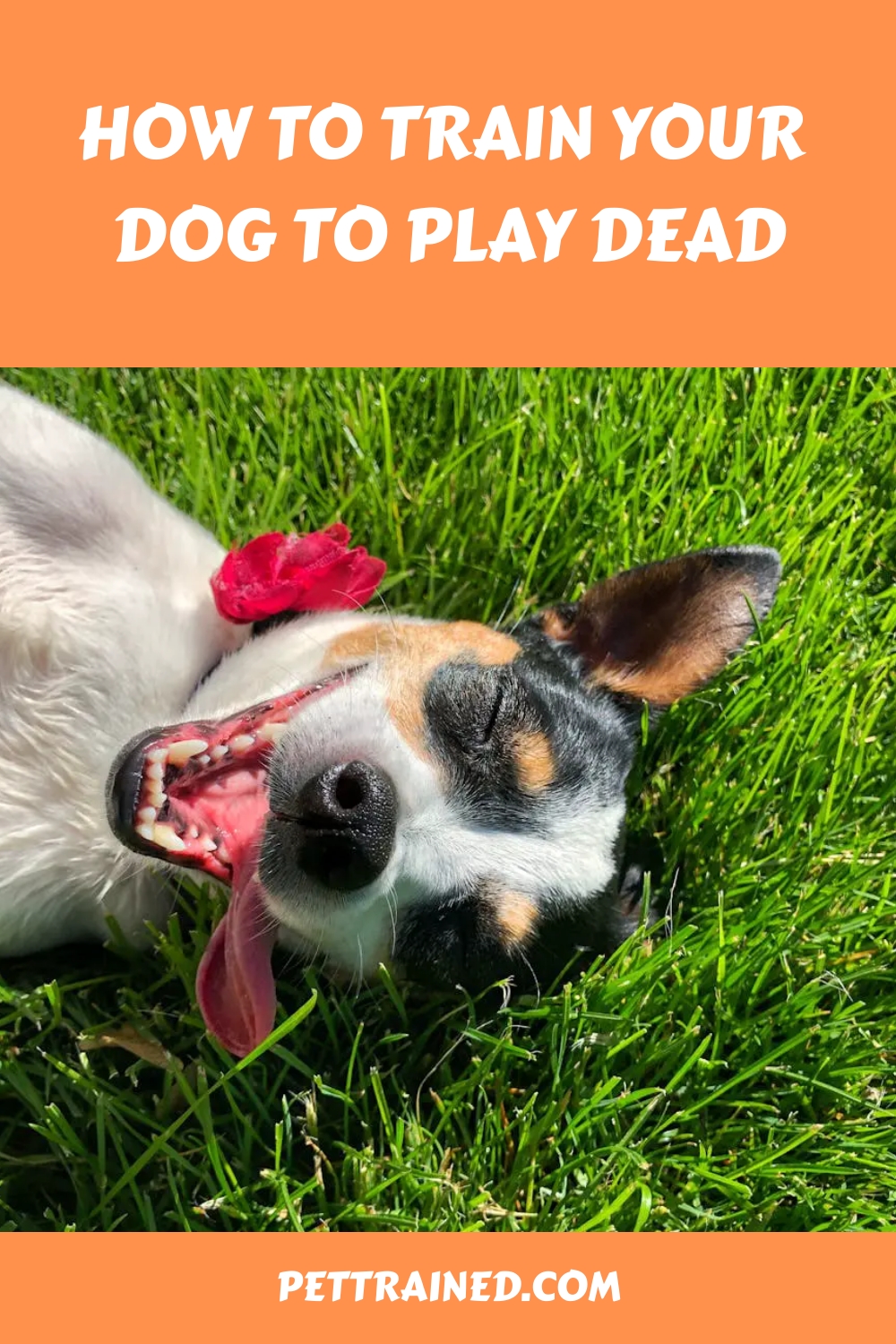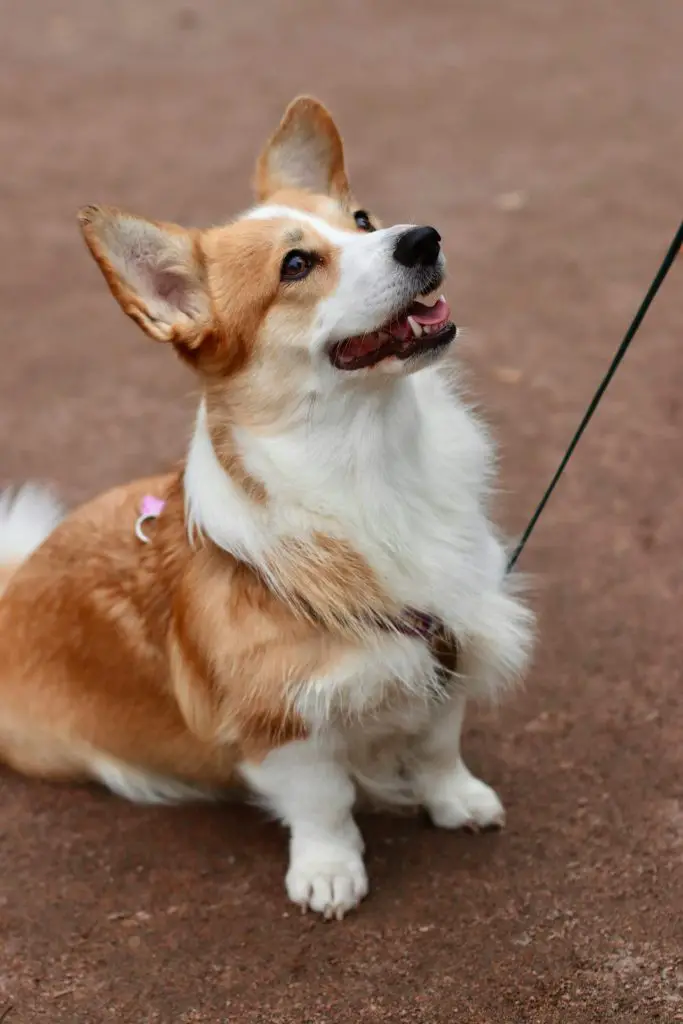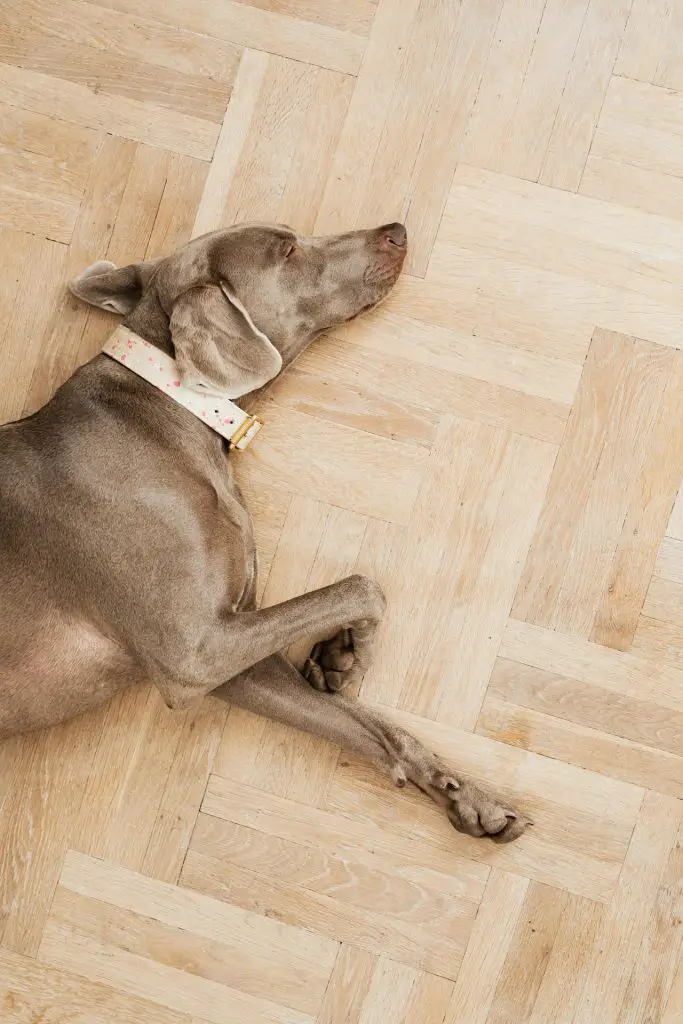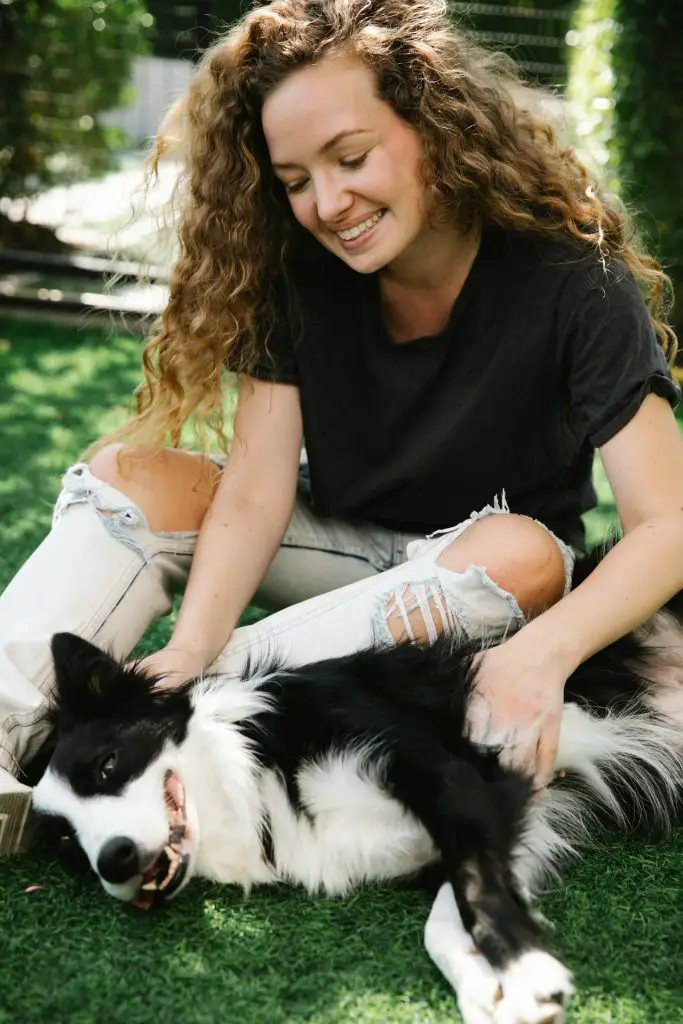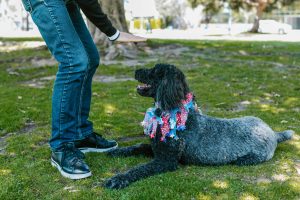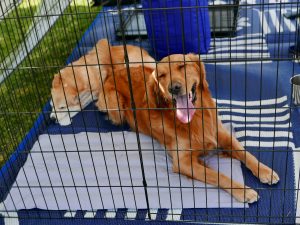
Just like Lazarus rising from the dead, your furry friend can learn to “resurrect” on command with the classic trick of playing dead. You’ll find that teaching this entertaining skill isn’t as intimidating as it might seem. With patience, consistency, and the right approach, you can guide your canine companion through the process of mastering this crowd-pleasing performance. But before you jump into training, there are a few key elements you’ll need to take into account to guarantee success. The journey to a perfectly executed “play dead” routine is filled with both challenges and rewards, and you’re about to discover what it takes to make it happen.
Table of Contents
Key Takeaways
- Establish a solid “down” command as the foundation for playing dead.
- Use treats to lure your dog into lying on its side with its head on the floor.
- Introduce a clear verbal cue like “play dead” or “bang” consistently during training.
- Reward immediately after the dog completes the full “play dead” position.
- Gradually increase the duration your dog holds the position before giving the reward.
Prerequisites for Training
Before starting the “play dead” training, it’s crucial to guarantee your dog has mastered basic obedience commands. Confirm your pet responds consistently to “sit,” “stay,” and “down” cues.
These foundational skills will make teaching more complex tricks much easier.
Consistency is key in dog training, and breaking tasks into steps can facilitate learning for your pet.
Create an ideal training environment free from distractions. Choose a quiet room or enclosed outdoor space where your dog can focus solely on you and the task at hand.
This post contains affiliate links. However all the information provided on this site are my own honest opinions. See more in Disclaimer.
Remove any potential distractions such as toys, other pets, or loud noises.
Understand your dog’s motivation. Determine which rewards work best for your pet, whether it’s treats, praise, or playtime.
High-value treats often yield better results for more challenging tricks. Have these rewards readily available during training sessions.
Assess your dog’s physical capabilities. Confirm they’re comfortable lying on their side for extended periods. If your dog has any joint issues or mobility concerns, consult with your veterinarian before proceeding with this trick.
Establish a clear verbal cue and hand signal for the “play dead” command. Consistency in your cues will help your dog understand and respond more quickly to the desired behavior.
Choosing the Right Command

Verbal cues play an essential role in teaching your dog the “play dead” trick. When selecting a command, choose a clear, distinct phrase that you’ll consistently use.
Common options include “play dead,” “bang,” or “sleep.” Avoid words that sound similar to other commands your dog already knows to prevent confusion.
Command consistency is vital for effective training. Once you’ve chosen your cue, use it exclusively for this trick. Don’t interchange different phrases, as this can confuse your dog and hinder progress.
all family members use the same command to maintain consistency across training sessions.
Pair your verbal cue with a hand signal for enhanced communication. A common gesture is pointing your finger like a gun, but you can choose any clear, repeatable motion.
Always use the verbal cue and hand signal together during initial training phases.
Remember that positive reinforcement is key to successful training. Reward your dog with treats, praise, or toys when they respond correctly to the command.
This encourages them to associate the cue with the desired behavior, making future responses more likely and enthusiastic.
Starting With Basic Positioning
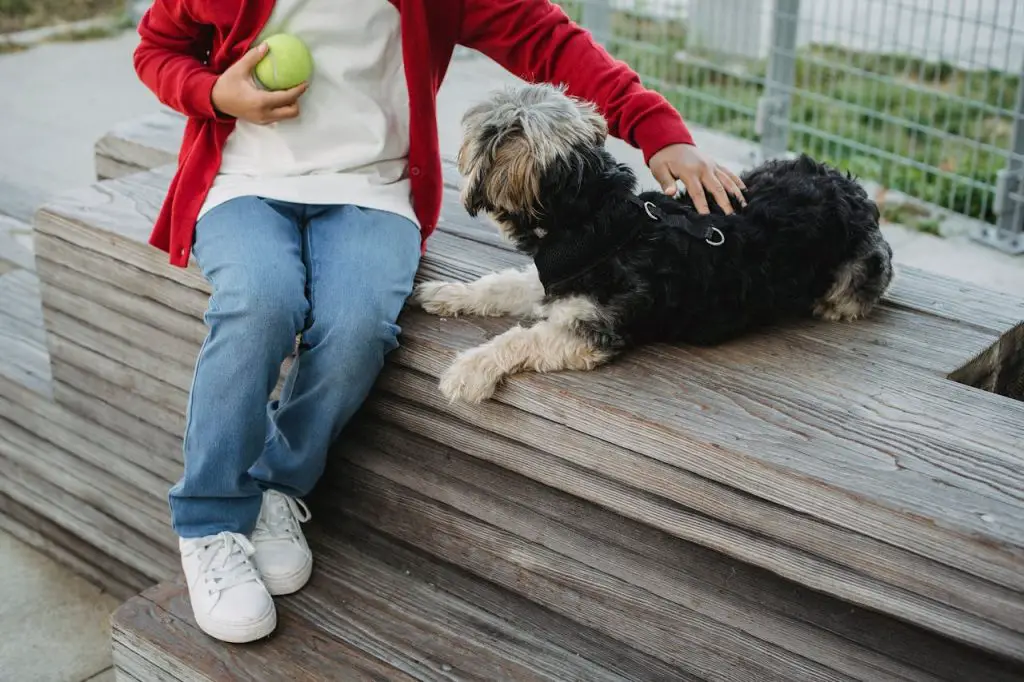
Begin by guaranteeing your dog can reliably lie down on command. This foundational skill is essential for more advanced training and enhances social interactions with visitors.
Consistent practice with commands guarantees quicker learning and better compliance.
Once your dog is lying down, encourage a relaxed, flat body position with all four legs extended.
Guide your dog’s head to rest on the floor, using gentle pressure if necessary, as this completes the basic “play dead” posture.
Lying Down on Command
To train your dog to play dead, you must first establish a solid foundation in basic positioning, starting with the “down” command. Begin by holding a treat close to your dog’s nose while standing.
Slowly lower the treat to the ground, encouraging your dog to follow it with their nose. As your dog’s body lowers, use the verbal cue “down” and provide positive reinforcement when they assume the correct position.
Consistency is key in reinforcing this behavior. Practice the “down” command in various environments to guarantee your dog responds reliably.
Pay close attention to your dog’s body language, as it can indicate their level of understanding and comfort with the command. If your dog shows signs of confusion or resistance, break the exercise into smaller steps.
Once your dog consistently responds to the verbal cue, introduce a hand signal to accompany it. This dual-cue system will enhance your dog’s comprehension and response time.
Gradually increase the duration your dog remains in the “down” position before offering a reward. This extended hold will serve as an essential foundation for the more complex “play dead” trick in subsequent training stages.
Relaxed, Flat Body Position
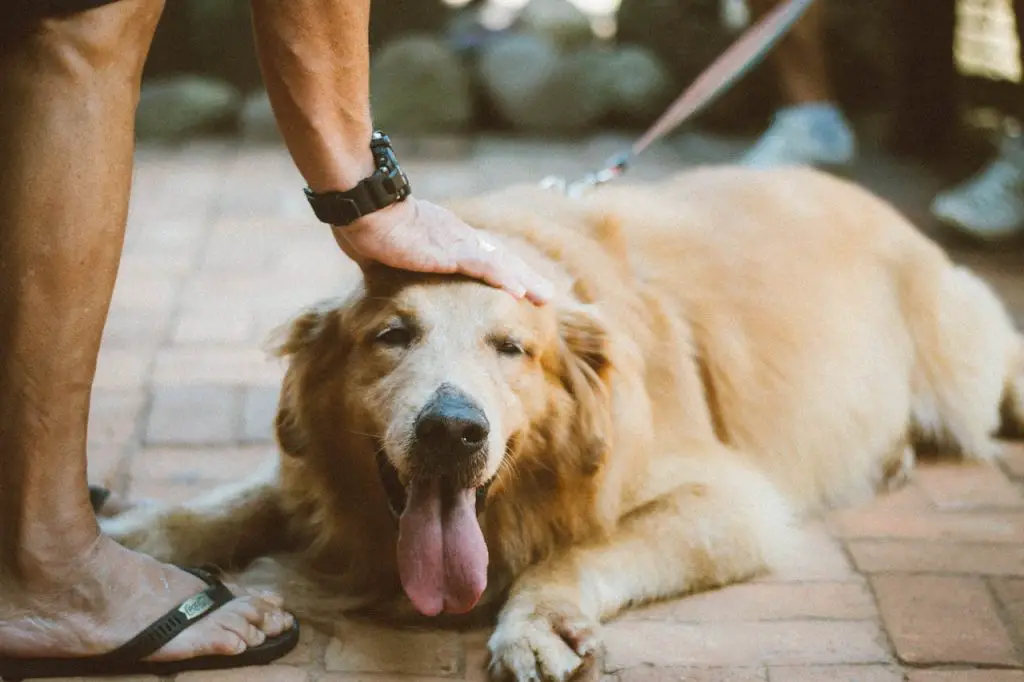
How does a dog’s body position affect the “play dead” trick? A relaxed, flat body position is essential for a convincing performance. Your dog’s comfort level and body language are key indicators of their readiness to learn this command.
Begin by ensuring a calm training environment. Guide your dog into a lying down position, then use physical cues to encourage them to roll onto their side.
Employ positive reinforcement techniques to reward the desired posture. Gradually increase the duration your dog holds this position.
| Training Stage | Focus Area | Key Technique |
|---|---|---|
| Initial | Positioning | Physical guidance |
| Intermediate | Duration | Positive reinforcement |
| Advanced | Consistency | Distraction management |
| Mastery | Performance | Verbal/visual cues only |
As your dog progresses, implement patience techniques to extend the time they remain “dead.” Introduce subtle distractions to test their focus.
Always prioritize safety precautions, avoiding rough surfaces or prolonged periods in this position.
Head Resting on Floor
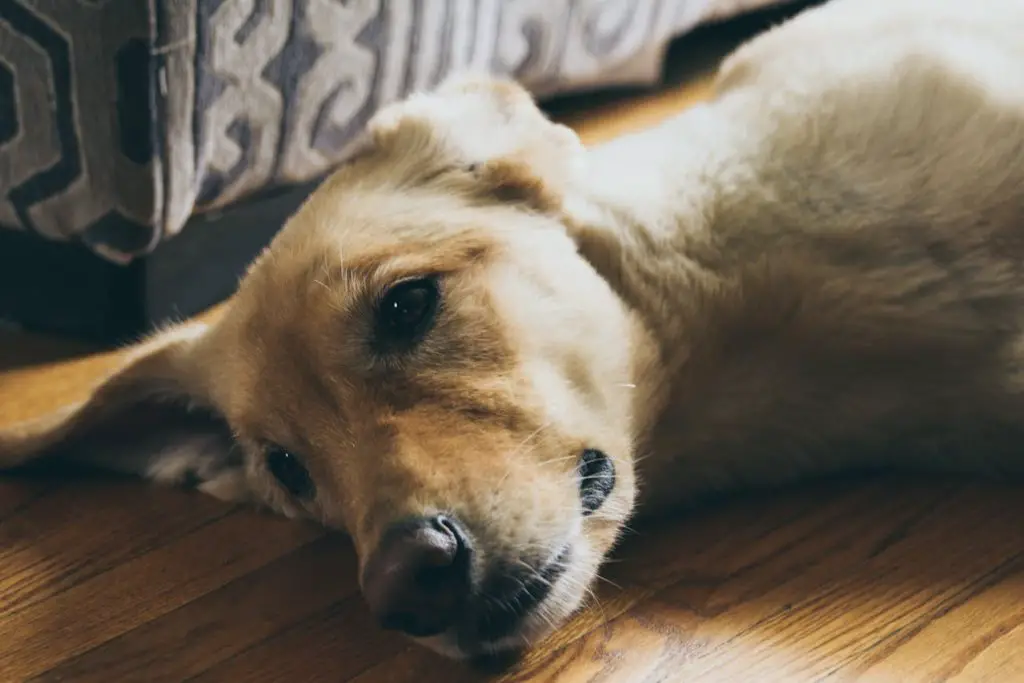
One essential aspect of the “play dead” trick involves teaching your dog to rest their head on the floor. This step is important for authenticity and requires careful training to achieve the correct head position.
Trending in Dogs:
Begin by having your dog lie down in a relaxed position. Once they’re comfortable, gently guide their head to the floor using a treat or a hand signal.
Encourage your dog to maintain this position for increasingly longer periods. You’ll want to make sure their head is fully resting on the floor, not just hovering above it.
Pay attention to your dog’s floor comfort, as discomfort may cause them to resist maintaining the position. If needed, provide a soft surface like a mat or carpet for training sessions.
As your dog becomes more proficient, gradually reduce physical guidance and rely more on verbal cues. Use a specific command, such as “head down,” to prompt the desired head position.
Reward your dog immediately when they achieve the correct posture. With consistent practice, your dog will learn to automatically rest their head on the floor when performing the “play dead” trick, enhancing the overall realism of the command.
Introducing the Full Motion

Begin introducing the full “play dead” motion by gradually altering your dog’s body position from the basic lying down posture.
As you progress, incorporate your chosen verbal cue, consistently associating it with the action to reinforce the command.
Implement precise reward timing techniques, offering treats or praise immediately as your dog achieves the correct position, to effectively reinforce the desired behavior.
Gradual Body Position Changes
Having mastered the basic lying down command, it’s time to introduce your dog to the full “play dead” motion. Begin by encouraging your dog to lie on its side instead of in a sphinx position.
Use a treat to lure them into this posture, gradually moving the treat from their nose towards their shoulder. As your dog follows the treat, their body will naturally roll onto its side.
Once your dog is comfortable lying on its side, start incorporating subtle body language cues. Pair a verbal command like “play dead” with a hand gesture mimicking a gun.
Consistency in these cues is vital for effective training. Slowly increase the duration your dog remains in the “dead” position, rewarding them for holding the pose.
Training patience is essential during this phase. Some dogs may resist fully exposing their belly, as it’s a vulnerable position. Progress incrementally, rewarding small improvements.
If your dog shows signs of stress or discomfort, revert to earlier stages of the training. As your dog becomes more confident, gradually reduce the use of treats and rely more on verbal praise and physical affection as rewards.
Verbal Cue Integration
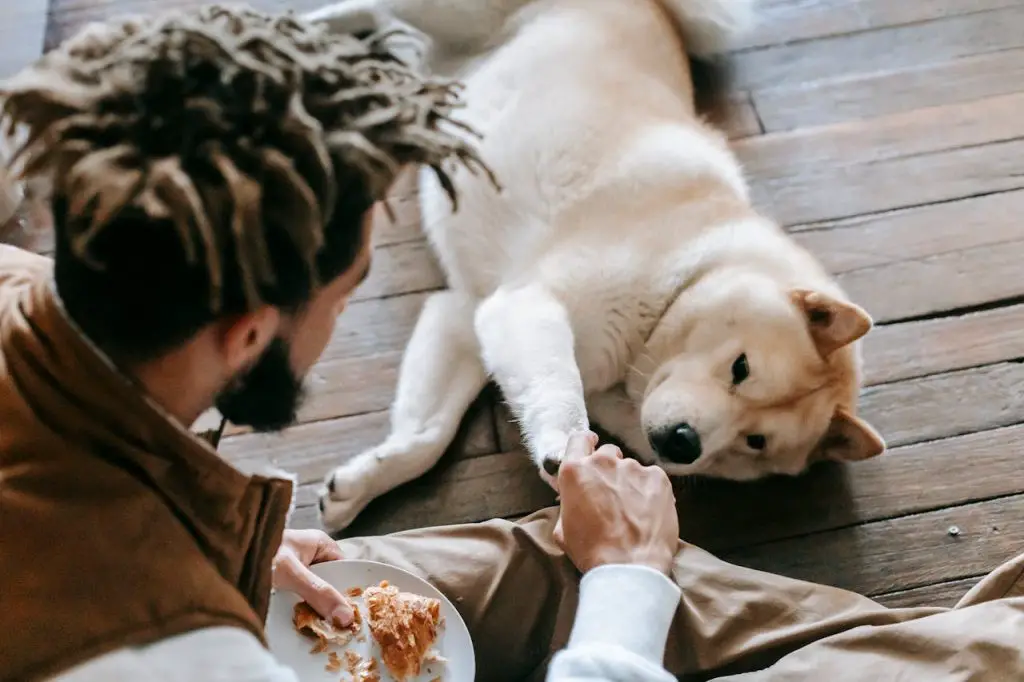
As your dog becomes proficient in assuming the “play dead” position, it’s important to integrate a clear verbal cue.
Begin by selecting a concise command, such as “play dead” or “bang.” Consistency is key, so always use the same cue to avoid confusion.
Introduce the verbal cue just before your dog starts to lie down, gradually reducing the time between the cue and the action.
Pair the verbal cue with the hand signal you’ve been using, eventually phasing out the hand signal as your dog responds reliably to the voice command alone.
Practice the cue in various environments to guarantee your dog understands and responds consistently. Verbal reinforcement is significant during this phase, so praise your dog enthusiastically when they respond correctly to the cue.
If your dog struggles with the verbal cue, revert to earlier training stages and progress more slowly. Remember, cue consistency is crucial for successful integration.
Once your dog reliably responds to the verbal command, you can introduce distractions to test their understanding and reinforce the behavior in different contexts.
This gradual approach will help solidify the “play dead” command in your dog’s repertoire.
Reward Timing Techniques
Reward timing plays a pivotal role in reinforcing the complete “play dead” behavior. As you introduce the full motion, it’s essential to employ precise timing strategies to solidify your dog’s understanding of the command.
Initially, reward your dog immediately upon completing the entire sequence: lying down, rolling onto their side, and remaining motionless.
This immediate reinforcement helps establish a clear connection between the action and the reward.
As your dog becomes more proficient, gradually delay the reward by a second or two. This slight pause encourages your pet to hold the position longer, mimicking a more convincing “dead” state.
Experiment with different reward types to maintain engagement and motivation. Alternate between high-value treats, verbal praise, and physical affection to prevent reward satiation.
Implement a variable reward schedule once your dog consistently performs the full motion. Sometimes offer the reward immediately, while other times delay it slightly. This unpredictability keeps your dog attentive and keen to please.
Remember to maintain a calm demeanor throughout the training process, as your energy can influence your dog’s performance and receptiveness to the command.
Reinforcing the Behavior
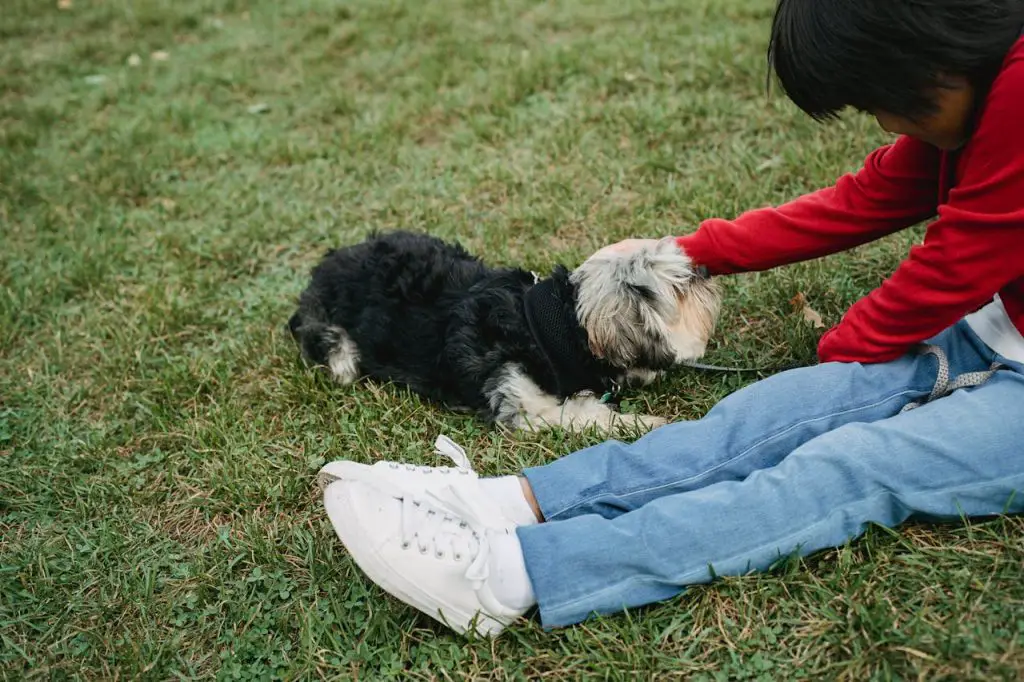
Consistent reinforcement is essential for solidifying your dog’s “play dead” trick. Employ positive reinforcement techniques to strengthen the behavior, using treats, praise, or clicker training as your primary tools.
Gradually increase the duration your dog remains in the “dead” position before rewarding. This progressive approach helps build stamina and reliability in the trick’s execution.
Just as with basic obedience commands, short and consistent training sessions are key to success.
Implementing distraction training can also help your dog maintain focus while performing the “play dead” trick in various environments.
To effectively reinforce the behavior, implement the following strategies:
- Vary your reward schedule to maintain engagement
- Incorporate the trick into daily routines for regular practice
- Use environmental cues to prompt the behavior in different contexts
- Combine “play dead” with other commands to create complex sequences
- Gradually phase out food rewards in favor of verbal praise and physical affection
As your dog becomes more proficient, introduce distractions during training sessions to test their focus and reinforce the behavior under challenging conditions.
Consistently reward successful attempts, even if they’re not perfect, to encourage continued effort. Remember to keep training sessions short and engaging to prevent fatigue or loss of interest.
Troubleshooting Common Issues
During the training process for the “play dead” trick, you’ll likely encounter several common issues. One prevalent problem is your dog’s inability to maintain the position for an extended period.
To address this, gradually increase the duration of the “stay” command before releasing your dog.
Another challenge is your dog’s tendency to become distracted by external stimuli. Mitigate this by training in a quiet environment and gradually introducing common distractions as your dog progresses.
Some dogs may struggle to understand the behavioral cues associated with the trick. In such cases, break down the command into smaller steps and reinforce each component separately.
If your dog consistently fails to respond to the verbal cue, reassess your timing and verify you’re delivering the command clearly and consistently.
Overexcitement can also hinder progress. If your dog becomes too energetic during training sessions, implement brief breaks or incorporate calming exercises.
Finally, if your dog shows signs of stress or discomfort while performing the trick, reevaluate your training approach and consider consulting a professional dog trainer for personalized guidance.
Advanced Variations and Tricks
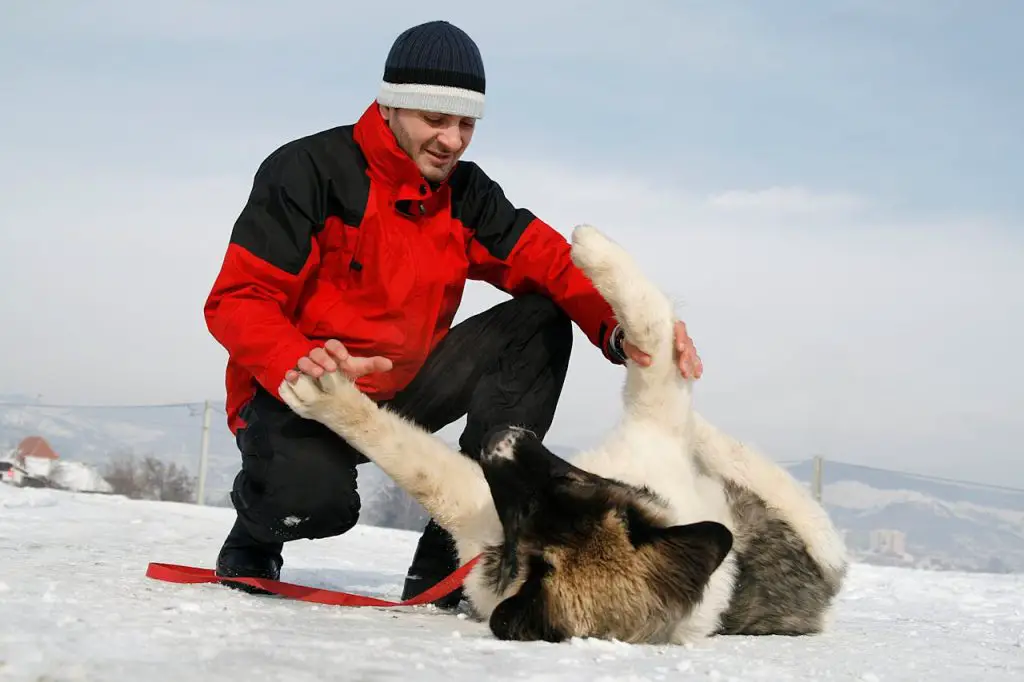
Once your dog has mastered the basic “play dead” trick, you can introduce advanced variations to challenge and engage them further.
These performance enhancements will elevate your dog’s skills and provide mental stimulation. Consider incorporating the following advanced tricks:
- “Bang-bang”: Train your dog to play dead from a standing position when you make a gun gesture with your hand.
- Delayed response: Teach your dog to wait a few seconds before “dying” after the command.
- Multiple “deaths”: Have your dog play dead, get up, and repeat the action several times in succession.
- Distance control: Practice the trick from increasing distances, using both verbal and hand signals.
- Contextual play dead: Train your dog to perform the trick in various locations and situations.
To implement these variations, use the same positive reinforcement techniques employed in the basic training.
Gradually increase the difficulty and duration of each advanced trick. Incorporate props, such as toy guns or specific clothing items, to create unique cues for different variations.
Remember to keep training sessions short and enjoyable to maintain your dog’s enthusiasm.
With consistent practice and patience, your dog will soon be performing these advanced “play dead” tricks with impressive precision and flair.
Frequent Questions and Answers

You’ll find training duration varies based on your dog’s motivation and learning speed. Typically, it takes 1-3 weeks of consistent practice. Use positive reinforcement and short, frequent sessions to achieve the best results in teaching this trick.
Time’s no barrier for old dogs! You can teach them new tricks, but be aware of training challenges. Adapt motivation techniques to their preferences and consider health limitations. With patience and persistence, your senior canine can master “play dead.”
You’ll find that breed characteristics can influence trainability, but effective training methods matter most. Intelligent, obedient breeds may learn faster, but any dog can master “play dead” with consistent, positive reinforcement techniques and patience.
Like a chef choosing the perfect ingredient, select the reward that ignites your dog’s passion. Assess your pup’s food motivation and toy preference. For ideal results, utilize whichever stimulus elicits the strongest response during training sessions.
You’ll find teaching “play dead” offers numerous behavioral benefits. It provides mental stimulation and reinforces training consistency. Through positive reinforcement, you’re enhancing your dog’s ability to learn and respond to commands, improving overall obedience training effectiveness.
